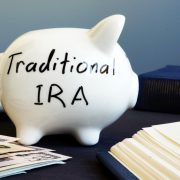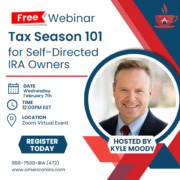How to Use Self-Directed IRAs at Retirement Age
59 and a half. Boy, time flies by, doesn’t it? You might not exactly feel ready to retire yet, but if you’ve just hit the age of 59 ½, you might not be aware of how much in your life just changed. This is typically the age of retirement for many IRAs, including Self-Directed IRAs, and it means you’re going to have to start making decisions as to how your retirement portfolio looks. But what is this age, what does it mean, and what does it all have to do with focusing on retirement? Let’s answer those questions today.
What is the Significance of Having a Self-Directed IRA at Age 59 ½?
The age of 59 ½ is the age at which the IRS allows you to stop being a retirement investor and start being a retirement beneficiary—at least in terms of where the money flows. Until this age, you have been limited to being able to contribute to the retirement account, including Self-Directed IRAs. But upon reaching the age of 59 ½, you can potentially begin to access the money you have in tax-protected accounts like your 401(k) and IRA.
Before this age, you will be limited in what you can do with the money in your accounts, depending on the type of account. For example, a Self-Directed Roth IRA has a lot of flexibility because it uses after-tax money for contributions. This means you might be able to access the contributions you’ve made to the account with minimal penalties or no penalties at all—but you wouldn’t be able to access the growth in the same way until hitting retirement age.
However, at the age of 59 ½, your accounts then become more flexible. You don’t necessarily have to begin pulling money out at this stage, but you do have to think about what your plans will be for the future. In some cases, such as Self-Directed IRAs with before-tax contributions, you may be required to take the appropriately-titled Required Minimum Distributions out of the account as you enter your 70s. This is another consideration for anyone who is reaching retirement age—they now have to start thinking about whether they want to take money out, or still allow the money within the account to continue to grow.
Do You Have to Take Money Out at Retirement Age?
No. That is, no, you don’t have to start taking money out of a retirement account at the age of 59 ½. However, you may begin to take money out of an account like this if you so desire.
You may also have to begin taking RMDs, or Required Minimum Distributions, later in life, depending on the types of retirement accounts you have. If you have a Roth IRA, there are no RMDs—you can continue to let the investments in a Roth IRA grow and grow if you want, as the contributions you made toward this account were after-tax contributions.
What should you do at retirement age to handle your Self-Directed IRAs? Unfortunately, there’s no one single answer. Your specific situation—and the types of Self-Directed IRAs you choose—will have a major influence on your decisions. You should consult with a tax professional and financial adviser to help you plan for these ages. Ideally, you will know in advance what you want to do even before hitting retirement age.
Interested in learning more about Self-Directed IRAs? Contact American IRA, LLC at 866-7500-IRA (472) for a free consultation. Download our free guides or visit us online at https://americanira.com/.









